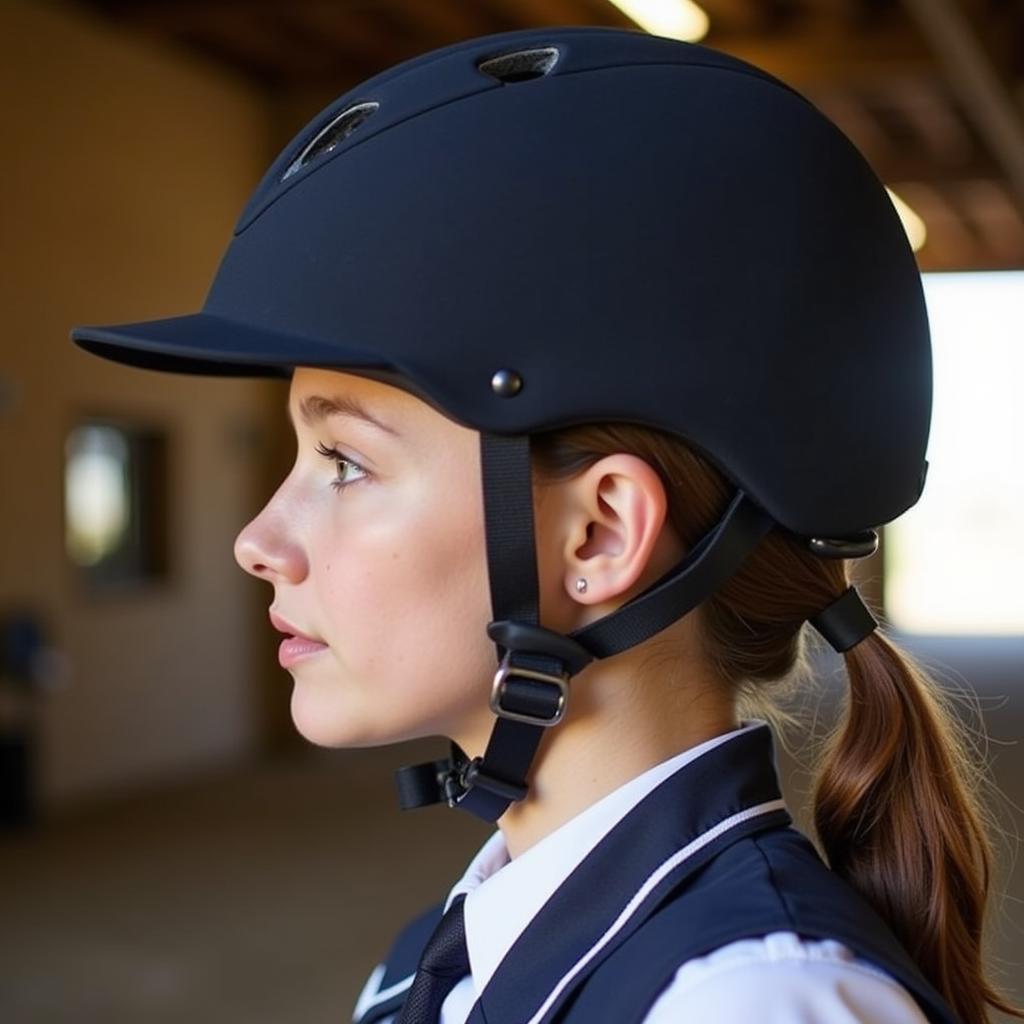Personal Protective Equipment, or PPE, is crucial for both horse and handler safety. Using the right PPE minimizes risks associated with horse handling and riding, ensuring a safe and enjoyable experience for everyone involved. Whether you’re a seasoned equestrian or just starting out, understanding and utilizing appropriate PPE is paramount.
Choosing the right helmet is paramount. Look for helmets that meet or exceed safety standards such as ASTM F1163 or PAS015. The helmet should fit snugly and comfortably, with the harness adjusted correctly. Regularly inspect your helmet for damage and replace it after any impact, even if the damage seems minor. Riding boots with a defined heel are essential to prevent your foot from sliding through the stirrup, which could lead to a dangerous situation should you fall. Gloves provide a better grip on the reins, improving control and reducing hand fatigue. They also protect your hands from blisters and rope burns. A properly fitted body protector is highly recommended, especially for jumping or cross-country riding. These vests absorb impact and can significantly reduce the severity of injuries in a fall. High-visibility clothing is also crucial, particularly when riding on roads or in low-light conditions. Bright colors and reflective strips make you more visible to drivers and other riders. Consider purchasing an appendix horses for sale and ensuring you have the right PPE before you start riding.
Choosing the Right Horse Riding Helmet
Protecting your head is the most important aspect of horse riding safety. A properly fitted and certified helmet is non-negotiable. Don’t skimp on quality when it comes to your head.
Key Features to Look For in a Riding Helmet:
- Certification: Ensure the helmet meets recognized safety standards like ASTM F1163 or PAS015.
- Fit: The helmet should sit comfortably snug, level on your head, and not obstruct your vision.
- Ventilation: Adequate ventilation keeps your head cool and comfortable during rides.
- Harness: A secure and adjustable harness ensures the helmet stays in place during a fall.
 Horse Riding Helmet Safety PPE
Horse Riding Helmet Safety PPE
Protecting Your Feet and Hands
Proper footwear and gloves are essential for safe and effective horse handling. They enhance your grip and control while protecting your extremities from injury.
Selecting the Right Riding Boots and Gloves:
- Riding Boots: Choose boots with a defined heel to prevent your foot from slipping through the stirrup.
- Gloves: Opt for durable gloves that offer a good grip on the reins while protecting your hands from blisters and abrasions.
Importance of Body Protectors and High-Visibility Clothing
While often overlooked, body protectors and high-visibility clothing are crucial for minimizing risks, especially in challenging riding environments. Thinking about a wooden toy horse for your child? Even play can benefit from safety awareness!
Enhancing Safety with Body Protectors and Hi-Vis Gear:
- Body Protectors: These vests absorb impact and significantly reduce the severity of injuries in a fall, especially during jumping or cross-country riding.
- High-Visibility Clothing: Bright colors and reflective materials make you more visible to others, enhancing safety when riding near roads or in low-light conditions.
Remember, consistent use of PPE can dramatically reduce the risk of injuries. “PPE is not just about following rules,” says renowned equestrian safety expert Dr. Emily Carter, “it’s about taking personal responsibility for your well-being and the well-being of your horse.” Making safety a priority is paramount to enjoying the equestrian lifestyle. For more information on horse health, you can check out our article on copper sulfate for horses.
Conclusion
Investing in and consistently using appropriate PPE is an investment in your safety and the longevity of your riding experience. From helmets and boots to body protectors and hi-vis gear, each piece of PPE plays a vital role in minimizing risks. “Never underestimate the importance of proper PPE,” adds Dr. Carter, “It can be the difference between a minor incident and a serious injury.” Remember to check your PPE regularly for wear and tear and replace any damaged items promptly. For those interested in stable management, our article on copper in horse water might be insightful. Consider a Budweiser clock with horses as a fun reminder of your equestrian passion.
FAQ
- What PPE is essential for beginners? A properly fitted helmet, riding boots, and gloves are the absolute essentials.
- How often should I replace my riding helmet? After any impact, or every 5 years, even without an impact.
- Are body protectors necessary for all disciplines? They are highly recommended for jumping and cross-country but beneficial for all riders.
- What makes a riding boot different from a regular boot? Riding boots have a defined heel to prevent the foot from sliding through the stirrup.
- Where can I find certified riding helmets? Reputable tack shops and online retailers specializing in equestrian equipment.
- How do I know if my helmet fits correctly? It should be snug, level, and not obstruct vision. A professional fitting is recommended.
- What are the different types of body protectors? There are various styles and levels of protection, so consult a professional for the best option for your discipline.
For further assistance, please contact us: Phone: 0772127271, Email: [email protected] Or visit us at: QGM2+WX2, Vị Trung, Vị Thuỷ, Hậu Giang, Việt Nam. We have a 24/7 customer service team.